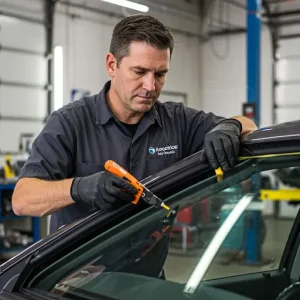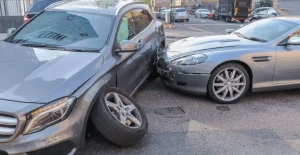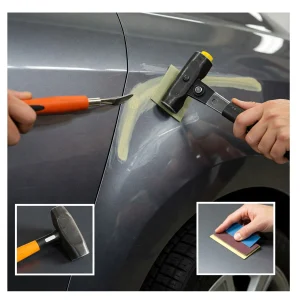Brakes and rotors are essential components of your vehicle’s braking system, ensuring safety and optimal performance. However, when it comes time to replace them, many car owners wonder about the brakes and rotors cost and how much they should expect to pay. The cost can vary depending on the vehicle type, labor fees, and the quality of the parts used. This guide will help you understand the factors that affect pricing and how to get an accurate estimate for replacing your brakes and rotors.
What Is the Difference Between Brakes and Brake Pads?
Many people use the term brakes to refer to the entire braking system, but it’s important to differentiate between the individual components.
Brake Pads: These are the friction materials that press against the rotors to slow down the car. They wear down over time and need to be replaced periodically.
Rotors: Also known as brake discs, rotors work with the brake pads to generate stopping power. They can wear down or become warped due to heat and friction.
While brake pads are replaced more frequently, rotors should also be checked during every brake service to ensure they are in good condition.
Brakes and Rotors Cost.
The brakes and rotors cost depends on several factors, including the make and model of your car, the quality of replacement parts, and labor costs. On average, replacing brake pads and rotors can range between $250 to $750 per axle, but this cost can be higher for luxury or high-performance vehicles.
If you are replacing only the brake pads, you might spend between $100 and $300 per axle, whereas replacing both rotors and pads together typically costs more.
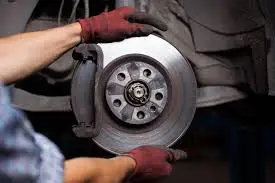
How Much for All 4 Rotors and Brake Pads?
If you need to replace all four rotors and brake pads, the total cost can range from $500 to $1,500, depending on the type of vehicle and the quality of the parts.
- Economy vehicles: $500 – $800 – Smaller, lightweight cars generally have lower-cost brake components.
- Mid-range cars: $800 – $1,200 – Sedans and SUVs require more durable parts, increasing the overall price.
- Luxury or performance cars: $1,200–$1,500+—High-performance brakes and specialized materials make replacements more expensive.
Luxury brands like Infiniti QX60, Jeep Wrangler, or Toyota Corolla may have higher brakes and rotors cost due to specialized parts and labor requirements.
Cost Factors for Brake Pad and Rotor
Several factors influence how much you will pay for Brakes and Rotors Costall 4 Or how much do brake pads cost, including:
1. Vehicle Make and Model
Luxury cars and performance vehicles often require specialized parts, which are more expensive.
2. Brake Pad Material
Ceramic brake pads cost more but last longer, while organic pads are cheaper but wear out faster.
3. Rotor Type
Standard rotors are cheaper, whereas high-performance or drilled rotors cost more.
4. Labor Costs
Prices vary based on your location and the car repair shop you choose. Dealerships often charge higher labor rates.
5. Aftermarket vs. OEM Parts
OEM (Original Equipment Manufacturer) parts cost more but are designed specifically for your vehicle. Aftermarket options can be more affordable.
How Much Should I Pay Someone to Do My Brakes and Rotors?
If you’re not replacing the brakes yourself, labor costs will be a factor in your total brakes and rotors cost. The average labor cost for brake service is around $100 to $250 per axle.
- Brake pads replacement: $100–$300 per axle—costs vary based on the vehicle type and the quality of the brake pads used.
- Brake pads and rotors replacement: $250–$750 per axle—replacing both ensures optimal braking performance and prevents uneven wear.
- Full brake system replacement: $500–$1,500+—Includes pads, rotors, calipers, and sometimes brake fluid replacement, depending on the vehicle’s condition.
It’s always a good idea to compare estimates of brakes and rotors cost from multiple repair shops before making a decision to ensure you’re getting the best value for your money. Put in your mind that you may should detect additional costs as detection of How much to fix exhaust leak?
Why Brake and Rotors Cost Varies by Vehicle Make and Model
The brakes and rotors cost varies significantly depending on a vehicle’s design, size, and part availability. Here are some examples:
- Toyota Corolla: Affordable to maintain, with brakes and rotors cost Toyota Corolla replacements averaging $300–$600 per axle, thanks to widely available and cost-effective parts.
- Jeep Wrangler: Off-road vehicles often require heavier-duty components, raising brakes and rotors cost jeep wrangler to $400–$900 per axle due to reinforced braking systems.
- Honda Accord: Mid-size sedans generally have moderate repair costs; brakes and rotors cost Honda Accord ranging from $350 – $700 per axle, balancing affordability and performance.
- Infiniti QX60: Luxury SUVs may have specialized braking systems, pushing brakes and rotors cost Infiniti qx60 to $500–$1,200 per axle, as they use premium materials and advanced technology.
Understanding these differences of brakes and rotors cost can help you plan for maintenance costs and choose the best parts for your vehicle’s needs.
Signs That Brake Pads and Rotors Need to Be Replaced
Knowing when to replace your brakes can prevent high brakes and rotors cost for repairs and ensure safety. Look out for these warning signs:
- Squeaking or Squealing Noises—A high-pitched sound when braking indicates worn-out brake pads.
- Vibrations While Braking—Warped rotors can cause a noticeable vibration when applying the brakes
- Longer Stopping Distances—If it takes longer than usual to stop, your brake pads may be too thin.
- Grinding Sounds—This could mean the brake pads have worn down completely, causing metal-on-metal contact.
- Brake Warning Light—If this light appears on your dashboard, get your brakes inspected immediately.
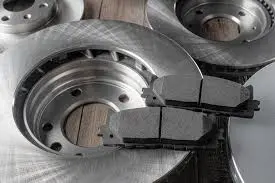
Why Are My Brakes Squeaking?
Squeaky brakes can be caused by:
- Worn-out brake pads—When brake pads wear down, the metal backing plate can make direct contact with the rotor, causing a squeaking or grinding noise.
- Moisture on the rotors (especially in the morning)—Overnight humidity or rain can create a thin layer of rust on the rotors, leading to temporary squeaking until the rust wears off.
- Low-quality brake pads—Some inexpensive brake pads contain high amounts of metal or hard materials that can cause squeaking when braking.
- Brake dust buildup—Accumulated brake dust and debris between the pads and rotors can create noise and reduce braking efficiency.
- Improperly installed brake components—loose or misaligned brake parts, such as calipers or shims, can cause vibrations and squeaking noises.
If the noise persists, it’s best to have a mechanic inspect your brakes to prevent further damage, ensure safe driving, and avoid high brakes and rotors cost for repair or replacement.
How Long Do Brake Pads Last?
On average, brake pads last between 30,000 and 70,000 miles, but this depends on your driving habits and the type of brake pads used.
- City driving with frequent stops will wear out brake pads faster—constant braking in stop-and-go traffic increases friction and heat, leading to quicker wear.
- Highway driving tends to extend brake life—fewer stops and smoother braking reduce strain on the brake pads, allowing them to last longer.
- Heavy braking or towing increases wear and tear— Sudden stops and the added weight from towing put extra pressure on the brake system, causing pads to degrade faster.
Regular inspections can help you determine when replacements are necessary, preventing brake failure and ensuring safe driving conditions and protect you from high brakes and rotors cost per axle or brake pads and rotors cost.
Maintaining Your Brake System to Avoid Costly Repairs
To extend the life of your brakes and rotors and avoid high brakes and rotors cost for repair or replacement, follow these maintenance tips:
- Check your brake pads regularly—inspect them every 10,000–15,000 miles to catch early signs of wear.
- Avoid aggressive braking—sudden stops generate heat, which wears out the pads and rotors faster.
- Flush brake fluid regularly—changing the fluid every 25,000–50,000 miles prevents corrosion.
- Use high-quality brake pads— Investing in durable brake pads can save you money in the long run.
- Get professional inspections—A mechanic can identify issues before they become major problems
 .
.
Expert Brake Service Near Me—Visit Westside Collision Today
If you need brake repairs, Westside Collision offers professional brake inspections and replacements to ensure your safety on the road. Our experienced technicians provide:
Accurate brake and rotor estimates
High-quality replacement parts
Competitive pricing
Fast and efficient service
Visit us today for a free brake inspection and get the best service for your vehicle.
Conclusion
Understanding brakes and rotors cost to replace or repair is essential when planning for maintenance. Costs vary depending on the vehicle make and model, the type of brake pads and rotors used, and labor charges. By staying proactive with maintenance and choosing a reliable brake and rotor repair near me, you can extend the life of your braking system and avoid unexpected expenses.


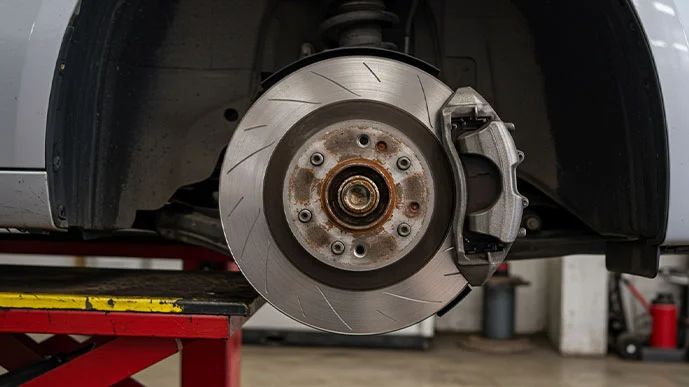
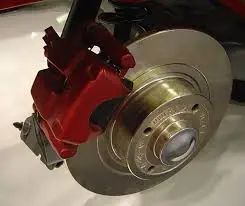 .
.